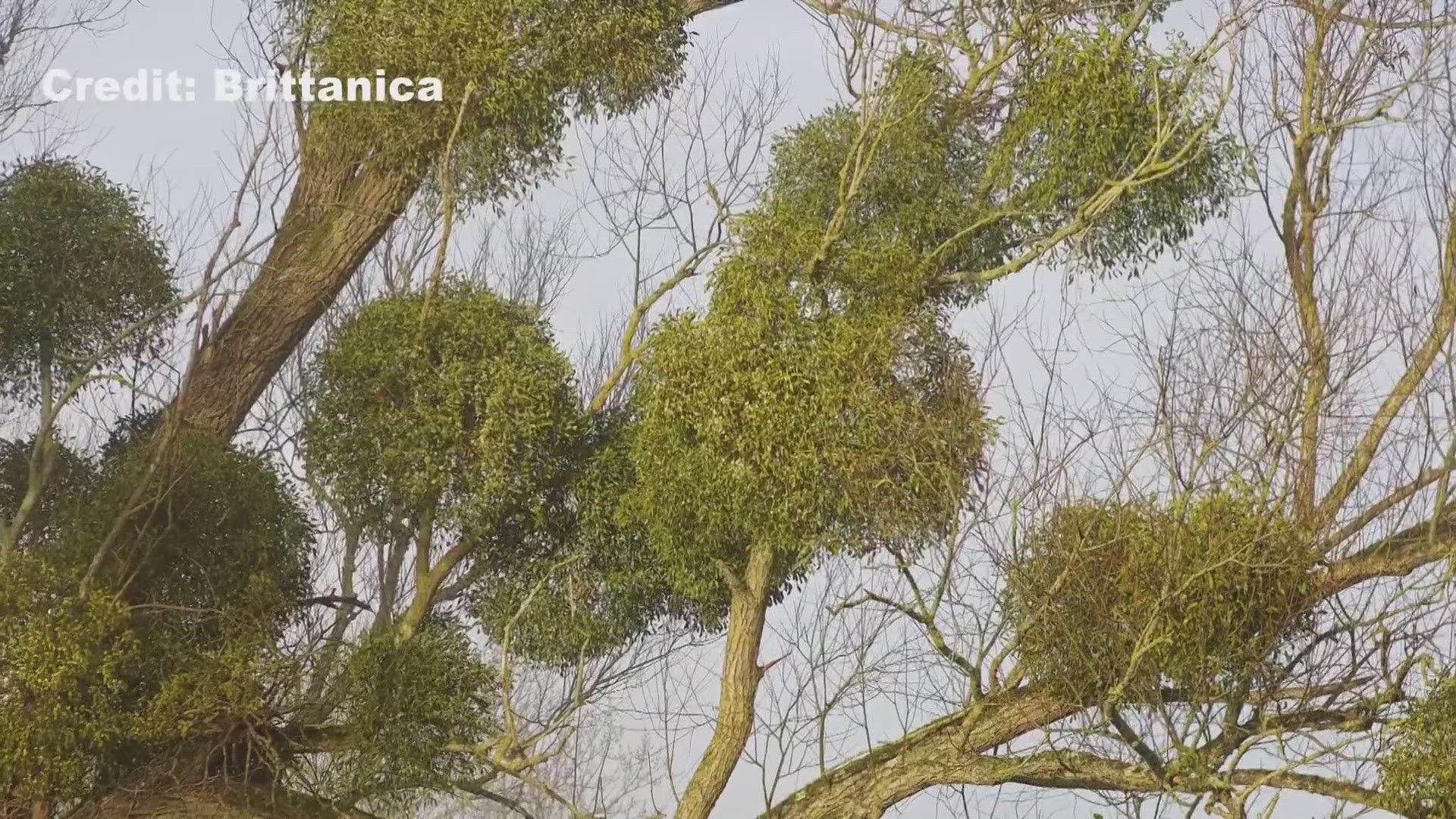KILLEEN, Texas — Mistletoe is widely known to be used to get a sweet kiss from a loved one during the holidays. However, many aren't aware of just how dangerous real mistletoe can be.
THE QUESTION
Is mistletoe poisonous?
THE SOURCE
Texas A&M University of Central Texas Associate Professor of Biology Dr. Laura Weiser Erlandson
THE ANSWER
Yes, mistletoe is a parasite that attacks the vessels of trees.
WHAT WE FOUND
In Texas, mistletoe is found in trees including oak, sugarberry, and elm. They can be seen year round, but bloom during the winter.
"When mistletoe grow on trees, they take nutrients from its host plant so it kind of sticks into tree vessels and steals water and nutrients," Erlandson shared.
If you see them forming on your trees, Erlandson recommends snapping them from the root.
"They just kind of look like little toughs and they can actually be about a meter cubed," Erlandson added.
Most importantly, mistletoe can be dangerous when ingested by people or animals.
"If eating a small quantities, it will cause nausea and vomiting," Erlandson said. "Eating a large quantity can be fatal to humans and to pets."
Poison.org reports that during the holiday season, children accounted for 92% of mistletoe ingestion cases, and 96% of all exposures were by swallowing. The vast majority of patients had no symptoms and there were no fatalities, including the 72 people who swallowed mistletoe on purpose.
So during your holiday festivities, it is recommended to use artificial mistletoe to prevent any harm.

